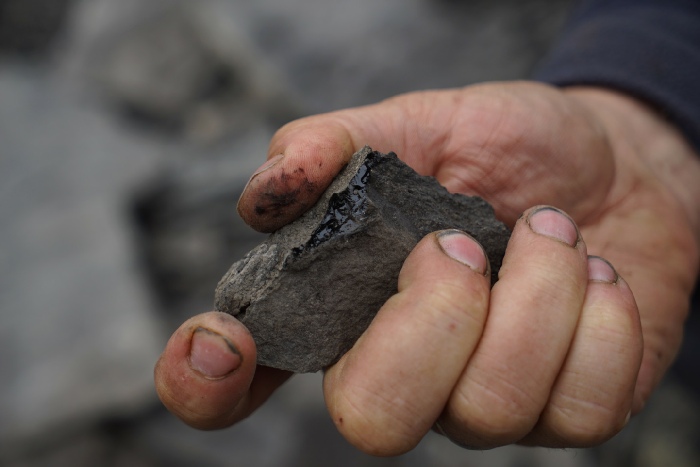Press Release
This fall’s major exhibition at Kunsthall Trondheim, Rivers of Emotion, Bodies of Ore, deals with the notion of extractivism—from the foundations in the 17th century of Trondheim’s prosperity through copper mining, until today’s many ways of extracting information, knowledge and emotions through social media and other digital communication. The exhibition, which has been curated by Lisa Rosendahl, presents works by Lise Autogena & Joshua Portway, David Blandy, Liv Bugge, Sean Dockray, Bodil Furu, Marianne Heier, Louis Henderson, Lawrence Lek, Hanna Ljungh, Rikke Luther, Ignas Krunglevičius, Eline McGeorge, Karianne Stensland, and Anja Örn, Tomas Örn & Fanny Carinasdotter.

Rivers of Emotion, Bodies of Ore
Kunsthall Trondheim (Norway)
13.09 - 21.12.2018


© ArtCatalyse International / Marika Prévosto 2018. All Rights Reserved
Exhibition September 13, December 21, 2018. Kunsthall Trondheim , Kongens gate 2 -
Extraction is a phenomenon commonly associated with fossil fuels, such as oil and gas, or with the mining of metals and minerals. In the digital era, the notion of extraction has expanded even further, to also include data-
The exhibition in Trondheim places contemporary artworks and historical materials in dialogue with each other, making the kunsthall into a site of intersectional exploration of the paradigm of extraction. Trondheim’s history of copper mining is used as a starting point for tracing a wider web of actual connections and speculative associations spanning different geographical, digital and emotional realms. Through conflating the exploitation of the Earth with that of the human mind and body, or comparing the actual materiality of digital hardware with the promise of the immaterial experience it seduces us with, the art works offer multiple entry points into the phenomena of extraction and its far-
The exhibition also prompts its audiences to consider a future scenario: in a thousand years from now, when both Earth and human consciousness might have been depleted of their resources, will today’s artworks be the only remaining fossils bearing witness to the emotional landscapes once inhabited by humans?
A publication with newly written essays by Johanna Dahlin & Martin Fredriksson, Sean Dockray, Mats Ingulstad & Pål Thonstad Sandvik, Jan M. Padios and Lisa Rosendahl will be published in early November.
Liv Bugge, We Would Not Call Ourselves Trilobite, 2017. © Liv Bugge, Hans Arne Nakrem, Museum of Natural History, Oslo and Museum of University History, Oslo.
